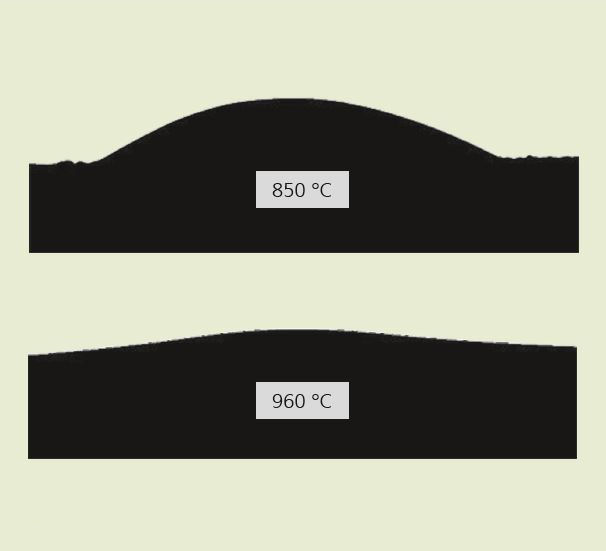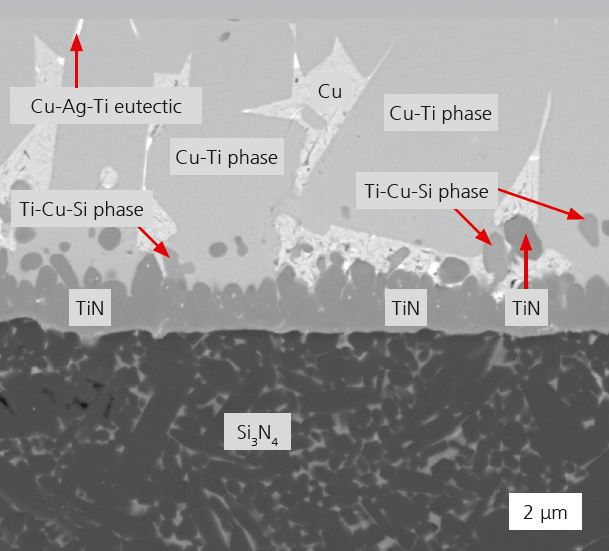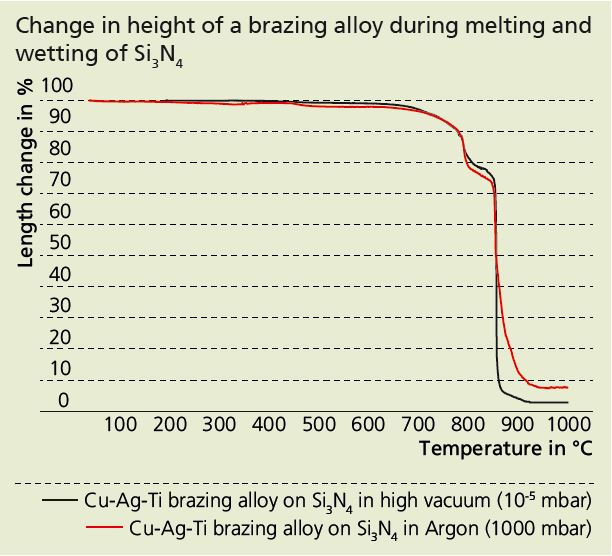
Optical dilatometry in high-purity atmospheres
Current research




Optical dilatometers measure dimensional changes in samples as a function of temperature and time. Along with hot-stage microscopes, they have a wide range of applications in materials and process development. For example, they can be used in the investigation of sintering processes and thermal expansion behavior, especially of anisotropic or fragile materials as well as samples with complex geometries. Wetting and spreading behavior on different substrates can be determined through optical measurement of the contact angle and determination of the surface tension up to high temperatures as well as measurement of the viscous properties of glasses. In addition, investigation of contact corrosion between metal and glass melts, slags, and molten ashes in contact with ceramic and metal materials is possible. Characterization of infiltration, for example, of metal melts into ceramic materials is another important possibility. Standard optical dilatometers and hot-stage microscopes are designed for measurements in air or atmospheres with relatively high oxygen concentrations. Within the framework of an AiFZIM project funded by the Federal Ministry for Economic Affairs and Energy (BMWi), Fraunhofer IKTS and Linseis Messgeräte GmbH have developed an optical dilatometer working in a high vacuum (approx. 5*10-5 mbar) with oxygen concentrations of about 0.5 ppm in dynamic atmospheres (normal pressure, approx. 5 L/h argon) for the analysis of processes under high vacuum or in high-purity atmospheres at temperatures of up to 1600 °C. A typical application for optical dilatometry is the characterization of processes occurring during joining of ceramic-ceramic and metal-ceramic materials by active metal brazing. With the newly developed optical dilatometer, investigations on melting and wetting behavior of brazing alloys containing braze components (e.g., titanium) of high oxygen affinity on ceramic substrates could be realized. In standard hot-stage microscopes, surface oxidation occurs because of the residual oxygen present, thereby hindering the wetting of the substrate by the brazing alloy or causing falsified experimental results to be obtained. With the new experimental possibilities, a major contribution to a fundamental understanding as well as the development and optimization of joining processes can be made.
Supported by
